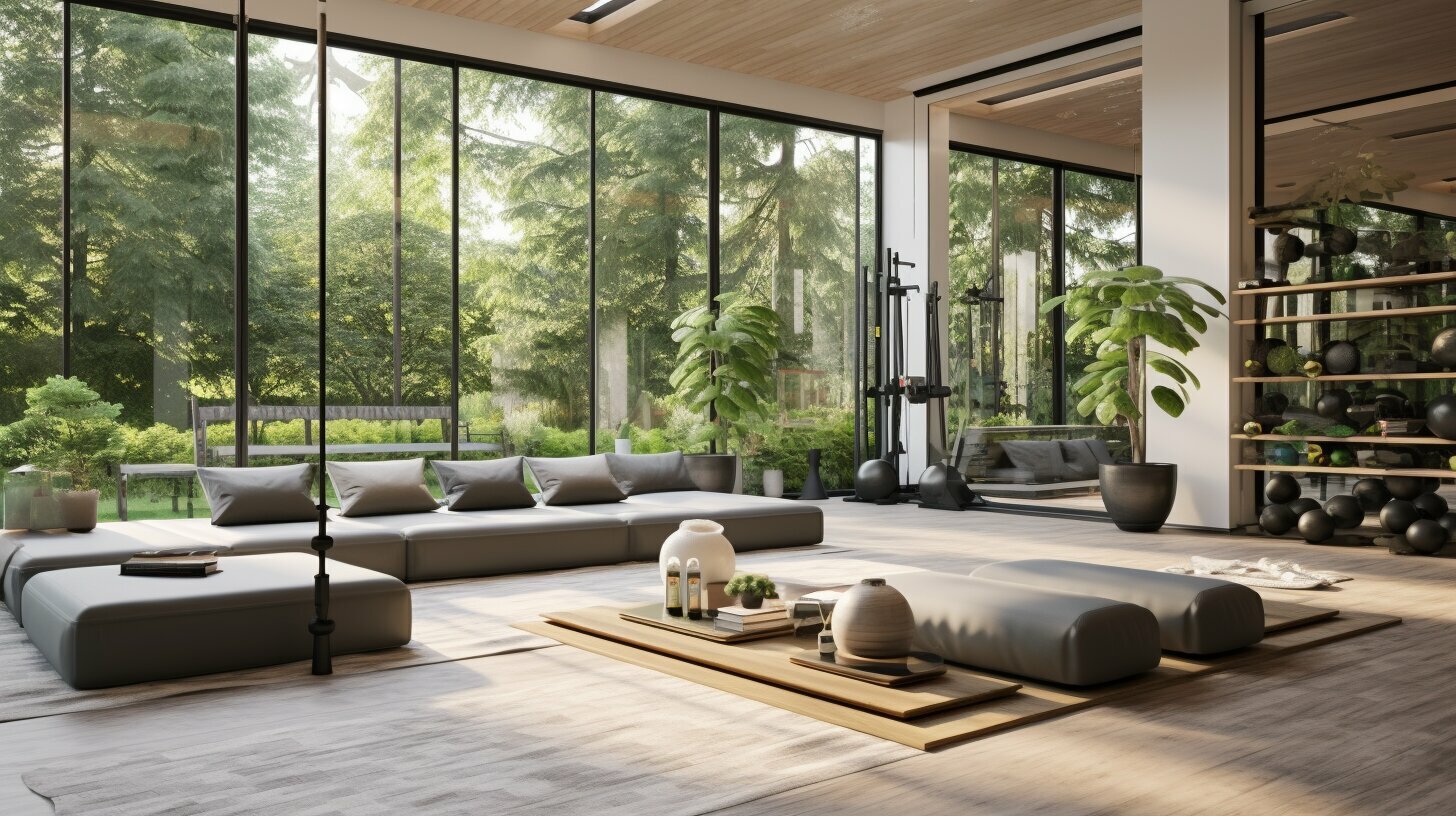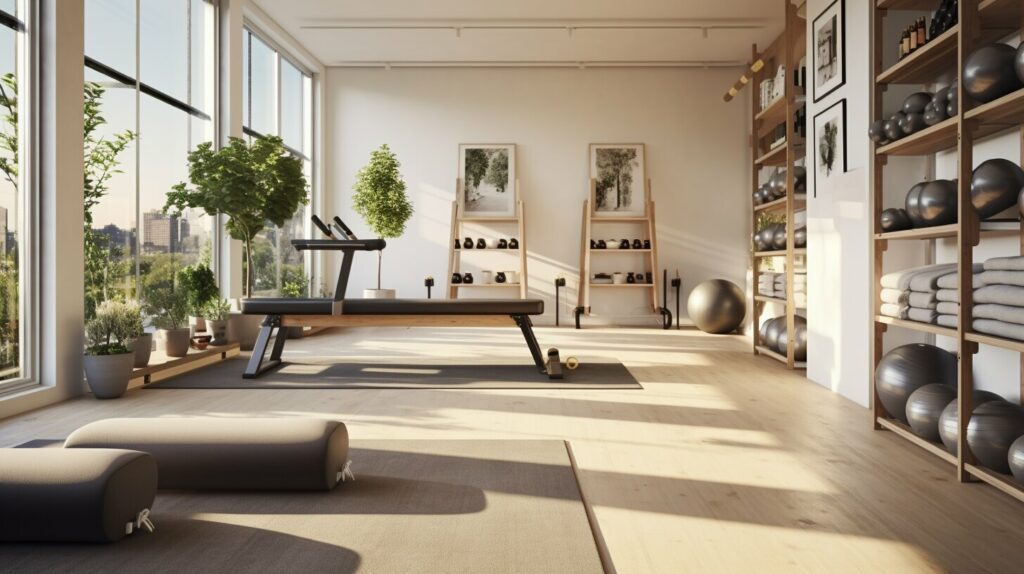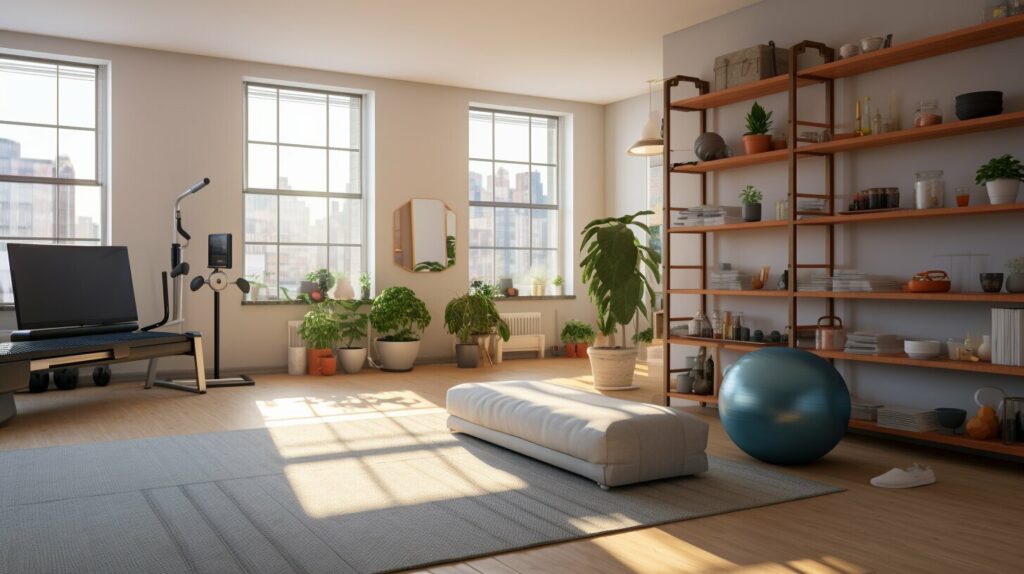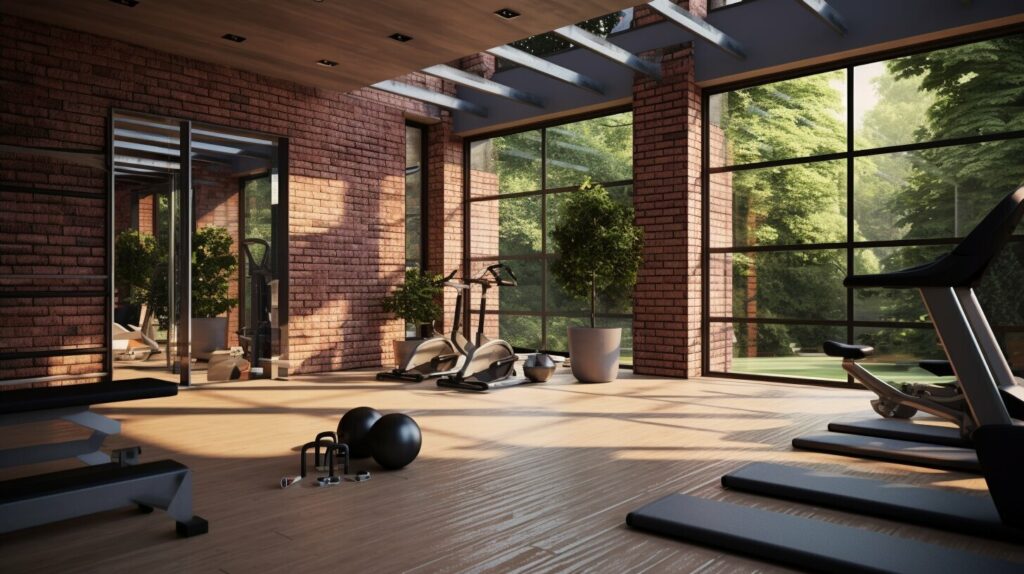Brick by Brick: Constructing Your Home to be a Fortress of Health and Fitness

Welcome to the world of the health-conducive home, where every brick contributes to the fortress of your wellbeing. Building a health fortress in your home is not about overnight transformations or quick fixes. It’s about taking small, sustainable steps towards a healthier lifestyle. It’s about constructing healthy environments and designing for health. So, grab your hard hat and let’s get started!
- Building a health-conducive home requires small, sustainable lifestyle changes.
- Each change should be practiced consistently for a 90-day period, like placing and sealing a brick.
- Creating a health fortress in your home allows for long-term wellness and continuous progress.
- Constructing healthy environments and designing for health are essential components.
- By embracing the concept of a health-conducive home, you can prioritize your wellbeing.
Now that we’ve laid the foundation, let’s dive deeper into the world of health-conducive homes. In the next sections, we’ll explore the benefits of creating fitness-friendly spaces, the key elements of constructing healthy environments, and how to design your home for optimal health. Get ready to construct your fortress of health and fitness, one brick at a time!
Embrace the Concept of a Health-Conducive Home
Transform your home into a sanctuary of wellness by embracing the concept of a health-conducive environment. Designing your living spaces to support your physical well-being is not only beneficial but also empowering. Imagine having a home fitness environment that inspires you to live a healthier lifestyle and encourages you to stay active. With fitness-friendly spaces and wellness at home, you can create a haven where healthy living becomes effortless.
When it comes to your well-being, your home plays a crucial role. It’s where you spend most of your time, and therefore, it should promote healthy habits. By incorporating elements such as ergonomic furniture, natural lighting, and indoor greenery, you can create a space that promotes physical activity and mental well-being. Whether it’s a dedicated fitness room or a strategically placed workout area in your living room, your home can provide the perfect setting for your exercise routine.
Creating Fitness-Friendly Spaces
One way to design a fitness-friendly space is by considering the layout and functionality. Optimize your home by ensuring there is ample space for physical activities like yoga, stretching, or even dancing. Arrange your furniture in a way that allows for easy movement and encourages you to engage in regular exercise. By making fitness a seamless part of your daily life, you increase the likelihood of maintaining a healthy and active lifestyle.
Another important aspect to consider is equipment and storage. Invest in versatile fitness equipment that suits your needs and store them in a designated area within your home. This not only keeps your living spaces tidy but also creates a visual reminder to incorporate exercise into your routine. Choose equipment that aligns with your interests and fitness goals, whether it’s a set of dumbbells, a yoga mat, or a stationary bike. Having these tools readily available will make it easier for you to stay motivated and committed to your fitness journey.

In addition to creating fitness-friendly spaces, enhancing the overall ambiance of your home can contribute to your well-being. Consider incorporating soothing color schemes, uplifting artwork, and relaxing scents to create a peaceful and rejuvenating environment. The goal is to transform your home into a place that nurtures your mind, body, and soul, providing you with the optimal conditions for health and fitness.
| Benefits of a Health-Conducive Home | Elements to Include |
|---|---|
| Improved physical fitness and cardiovascular health | Ergonomic furniture, fitness equipment |
| Reduced stress and improved mental well-being | Natural lighting, indoor greenery |
| Increased motivation and adherence to exercise routines | Fitness-friendly layout, designated exercise area |
By embracing the concept of a health-conducive home, you can create an environment that supports your well-being and encourages a healthier lifestyle. Take the first step towards a fitter and happier you by designing your home to be a fortress of health and fitness.
Constructing Healthy Environments for Physical Wellness
Building a health fortress requires careful attention to constructing healthy environments that support your physical wellness goals. It’s not just about renovating your space; it’s about creating a wellness-oriented architecture that promotes a healthier lifestyle. By incorporating physical wellness infrastructure into your home, you can create an environment that cultivates and supports your well-being.
To begin, consider incorporating elements such as a dedicated exercise room or a home gym. This provides a fitness-friendly space where you can engage in various physical activities, from cardio exercises to strength training. It’s essential to design this space ergonomically, ensuring that the equipment and layout cater to your specific needs. Ergonomic home setups minimize the risk of injury and maximize the effectiveness of your workouts.
Another crucial aspect of constructing a healthy environment is the availability of natural light and fresh air. Consider incorporating large windows or skylights to maximize natural light exposure. Natural light not only enhances the aesthetics of your home but also boosts mood and productivity. Additionally, proper ventilation systems promote clean air circulation, reducing indoor pollutants and ensuring a healthier living environment.
To illustrate the importance of constructing a healthy home, let’s take a look at the following table.
| Physical Wellness Infrastructure | Benefits |
|---|---|
| Home gym or dedicated exercise room | Convenient access to fitness facilities, promotes regular exercise, and supports overall physical health. |
| Natural light and ventilation systems | Enhanced mood and productivity, improved air quality, and reduced risk of respiratory issues. |
By constructing a healthy environment, you are investing in your long-term well-being. Designing for health and incorporating physical wellness infrastructure into your home can make a significant difference in your overall fitness and quality of life.
Remember, building a health fortress is not an overnight process. It requires consistent effort and small lifestyle changes incorporated into your daily routine. Adopt the brick-by-brick approach, placing each change thoughtfully and allowing time for it to solidify. With each brick, you are building a sustainable structure for long-term wellness.
So, whether it’s creating a fitness-friendly space or embracing natural light and ventilation, take the necessary steps to construct a healthy environment that supports your physical wellness goals. It’s time to lay the foundation for a healthier and happier future.

And that concludes our exploration of constructing healthy environments for physical wellness. Stay tuned for the next section where we delve into designing for health and creating fitness-friendly spaces within your home.
Designing for health goes beyond aesthetics – it involves creating functional spaces that inspire and support your fitness goals. Your home should be a sanctuary that encourages physical activity and makes exercise a natural part of your lifestyle. By carefully considering the design and layout of your living spaces, you can create an environment that motivates you to stay active and achieve your fitness aspirations.
First and foremost, think about the practicality of your home’s layout. Are there designated spaces for exercise? Is there enough room to move around freely without feeling cramped? Consider incorporating a dedicated fitness area, whether it’s a spare room, a spacious corner of your living room, or a well-equipped garage. This space should be equipped with exercise equipment, mirrors to check your form, and ample natural light to keep your energy levels high.
Furthermore, it’s important to prioritize ergonomics in your home design. Invest in comfortable and supportive furniture that promotes good posture and reduces the risk of injury. Choose adjustable desks and chairs that allow you to switch between sitting and standing positions, promoting better blood circulation and preventing the negative effects of prolonged sitting. Additionally, consider incorporating features like standing desks or treadmill desks to keep you moving while you work or study.
| Benefits of Fitness-Friendly Spaces | Examples |
|---|---|
| Fosters a positive mindset towards exercise | Designating a home gym with motivational quotes on the walls |
| Makes exercise convenient and accessible | Organizing workout equipment for easy access and storage |
| Encourages healthy habits for the whole family | Creating a designated area for family fitness activities |
| Boosts overall well-being and productivity | Incorporating comfortable and ergonomic furniture |
Remember, designing for health is about creating an environment that supports your fitness journey. By integrating fitness-friendly spaces into your home, you can remove barriers to exercise and make healthy habits a seamless part of your daily routine.

Achieving long-term wellness requires a strategic approach, and your home can play a vital role in supporting your health and fitness journey. By incorporating indoor fitness strategies and creating a wellness-oriented environment, you can transform your residential space into a sanctuary of health and fitness.
To begin, consider implementing home fitness solutions that cater to your specific needs. Whether it’s setting up a designated exercise area or investing in fitness equipment, having a space dedicated to physical activity can make all the difference. Not only does it provide convenience, but it also serves as a constant reminder to prioritize your health.
Strategic home wellness involves more than just physical exercise. It encompasses factors such as proper lighting, air quality, and ergonomic home setups. Ensuring that your home is adequately ventilated, well-lit, and ergonomically designed can enhance your overall well-being and contribute to a healthier lifestyle.
Immersing yourself in a wellness-oriented home environment fosters a positive mindset and encourages regular physical activity. So, go ahead and build your own health fortress – one brick at a time – and watch as your commitment to long-term wellness flourishes.

| Indoor Fitness Strategies | Home Fitness Solutions | Strategic Home Wellness | Residential Health and Fitness |
|---|---|---|---|
| Designate a dedicated exercise area | Invest in fitness equipment | Ensure proper lighting | Improve air quality |
| Follow online workout videos or apps | Create a home gym | Ergonomic home setups | Encourage positive mindset |
| Integrate physical activity into daily routines | Join virtual fitness classes | Enhance ventilation | Promote regular exercise |
Table: Key Elements for Building a Sustainable Structure for Long-Term Wellness
Conclusion
By constructing a health-conducive home and designing for health, you can build a fortress that supports your wellbeing for years to come. Building a health fortress in your home is not about quick fixes or radical transformations; it’s about making small, sustainable lifestyle changes that gradually become part of your daily routine. Just like building a real fortress, each change is represented as a brick, carefully placed and sealed with mortar.
Implementing these changes requires time and consistency. They cannot be rushed or forced. Instead, they should be embraced as a long-term commitment to your health and wellbeing. Take each brick, each change, and give it the attention it deserves. Instead of trying to make all the changes at once, focus on one brick at a time, allowing it to settle before moving on to the next one.
Resolutions to improve health often fail because they are approached with an “overnight” mentality. We expect instant gratification and dramatic results, but this mindset is not sustainable. True progress is made through small, consistent steps forward. By dedicating a 90-day period to each change, you give yourself time to adjust and integrate it into your life.
So, remember, building a health fortress is a gradual process. It requires patience, perseverance, and a commitment to long-term wellness. Each brick represents a small change, and over time, these bricks will come together to create a strong and sustainable structure for your health. So, start laying those bricks today and watch as your health fortress stands tall, supporting you for years to come.
